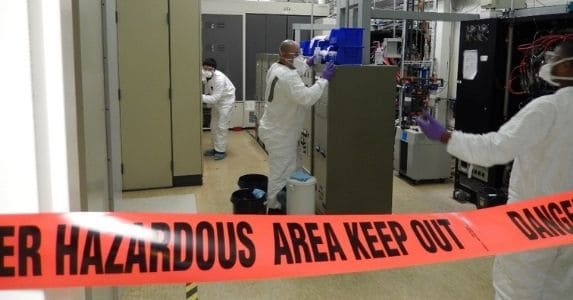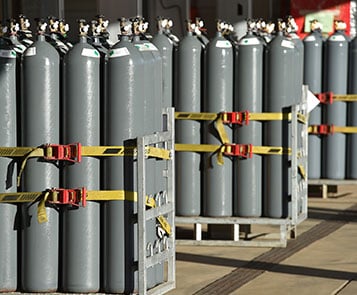Best Practices for a Successful Lab Decontamination
There are multiple reasons and benefits for completing a lab decontamination at your facility. It saves money, reduces liability, fulfills lease termination obligations, helps maintain the integrity of ongoing research, and helps ensure the safety of those who use or renovate the lab. Decontamination is a crucial factor when vacating a lab, moving to a new facility or location, or can be required in an existing lab for a variety of reasons.
A contamination-free environment is necessary to guarantee that any work done in a lab can be validated, verified, documented, and repeated. The research and results obtained in a contaminated environment, particularly tissue culture labs, may become contaminated and valuable time and materials are lost. Contamination can also present danger to laboratory staff, the facility, the environment, and the community. Lab operators cannot be certain that their space will meet regulations without proper decontamination. The following procedures will outline the steps lab operators should take to perform a successful decontamination.
Removal of Contaminants
No matter what the reason for decontamination is, lab personnel should remove all contaminants from the lab and properly dispose of or transport them to the new facility. The method of decontamination is determined by the area’s contaminants, so chemicals, radiation, or biological contaminants will require different cleaners to be used.
Preparing for a Decontamination
If a lab is being decommissioned, laboratory operators should conduct a decommissioning assessment report before performing a decontamination. This should include details of all chemicals used, procedures conducted, chemical hygiene plans, incidents, copies of existing permits, etc. Once this information is gathered, they can prepare a decommissioning plan. Include assessments of historically used chemicals in the area to ensure you have the correct means and methods. If you do not know the chemicals used, take samples and test. Lastly, ensure all hazards are removed. Potential hazards include things like vials, beakers, thermometers, or broken glass. These items should be removed before the lab decontamination is performed.
Performing a Decontamination
To determine the correct cleaner, lab operators should refer to the list of active chemicals used. All non-permeable surfaces should be decontaminated with an appropriate cleaner and equipment used to process and store chemicals should be treated. This includes bench tops, drawers, cabinets, floors and walls, chemical storage areas, cold rooms, and neutralization tanks, among other areas.
If ethidium bromide was used in the lab, then use appropriate cleaner and tools to ensure it has been properly removed. If sinks or fume hoods have traps, a mercury assessment should be performed. All laboratory equipment should be assessed and relocated or disposed of properly. Pay attention to sharps, broken glass broken containers, and other hazards. Don’t forget the small stuff: drain vacuum pumps, remove colorimeters, and decontaminate fume hoods, paying special attention to the chemicals used there.
Radiation and Biological Decontamination
Any radioactive material use areas need to be screened and sampled for gamma x-rays, beta, and alpha radiation, per the NRC guidance and permit requirements. A radiation survey must be performed and recorded on form RC-14, if radiation is detected and all surfaces must be cleaned until radiation is no longer detected. Disinfect everything used to process or store biological material. These should also be washed of bulk debris and adhered materials and then an appropriate disinfectant solution, per product specifications.
Following a decontamination, lab operators must complete and sign a decontamination certificate to ensure the process is documented. Lab decontamination is an intricate process that should be handled by environmental health and safety experts. Creating a clean lab space, a smooth transition, lowering costs, avoiding potential exposures, decreasing risks and liabilities, and meeting regulatory criteria requirements should all be objectives of a decontamination project. If you are currently planning a lab decontamination or would like to learn more for future projects, click below for more information, or contact our specialists to discuss your lab decontamination needs.






